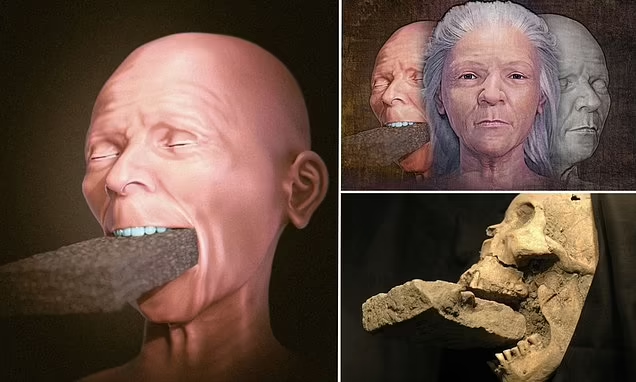Scientists determined that the skull belonged to a lower-class European woman who lived to be 61 years old.
Scientists have reconstructed the face of a 16th-century woman in whose mouth a brick was found.
The surprising discovery is related to the belief of the inhabitants of Venice at that time that the woman was a vampire who could attack the living from beyond the grave.
The story begins with the discovery of a mass grave on the Venetian island of Lazzaretto Nuovo, which served as a quarantine for plague patients in the 16th and 17th centuries. Archaeological research conducted in 2006 revealed that some bodies were buried there centuries ago.
It should be assumed that when a vampire was identified, i.e. one of those who was supposed to be responsible for the plague according to the myth of the time, a stone (brick) was placed in his mouth as a protective element, preventing him from feeding and infecting other people, explains Cícero Moraes, a Brazilian researcher forensic medicine.
Moraes, using reconstruction technology, investigated whether it was “possible” for a brick to get stuck in the woman’s mouth while she was still alive “without damaging the teeth or even the soft tissue.” According to the scientist, it would be easier to do this after her death.
There is also a theory that the gravedigger placed a brick in the woman’s body to “exorcise” her so that she would not be able to bite and infect others after death.
Scientists determined that the skull belonged to a lower-class European woman who lived to be 61 years old. For the study, scientists recreated the skull and created a Styrofoam “brick” to determine when the “protection” might have been placed – either before or after death.
“People examining the burial noticed an indentation near the mouth, indicating potential chewing,” Moraes said. Although many questions remain about this centuries-old mystery, Moraes is confident that he can answer the question of whether “it would be possible to insert a brick of these dimensions into the oral cavity while keeping the anatomical structures of the bones and perhaps the soft tissues intact.”
Based on the available evidence, the scientist concludes that this is entirely possible. This chilling hypothesis sheds new light on burial practices and beliefs in 16th-century Venice.


